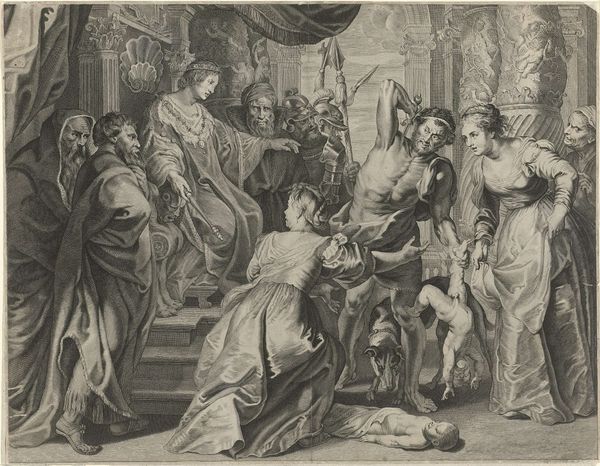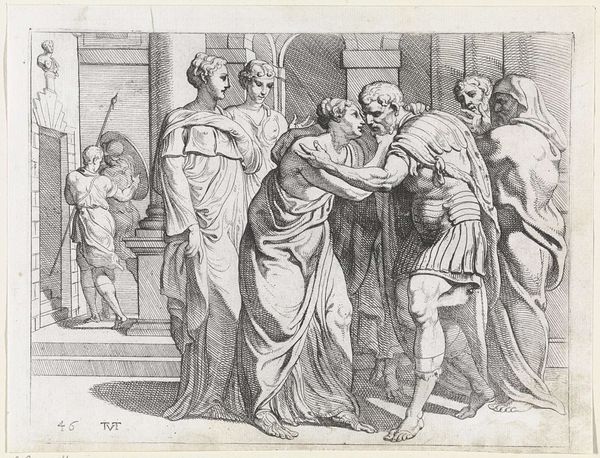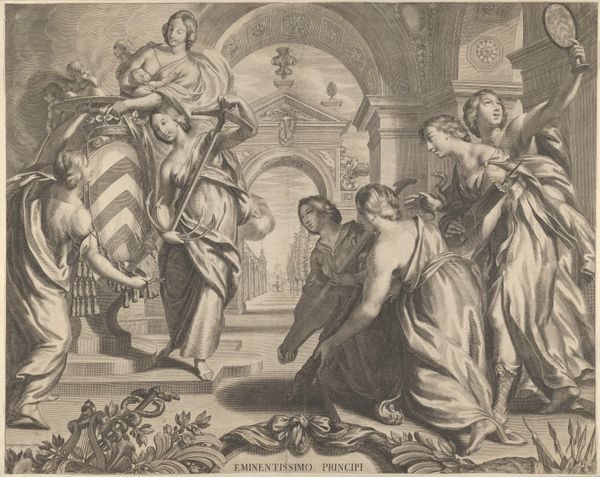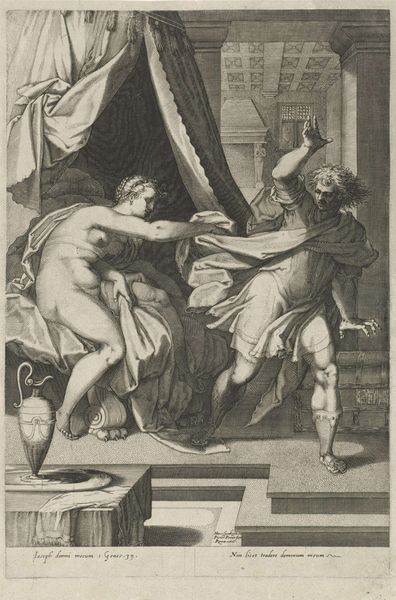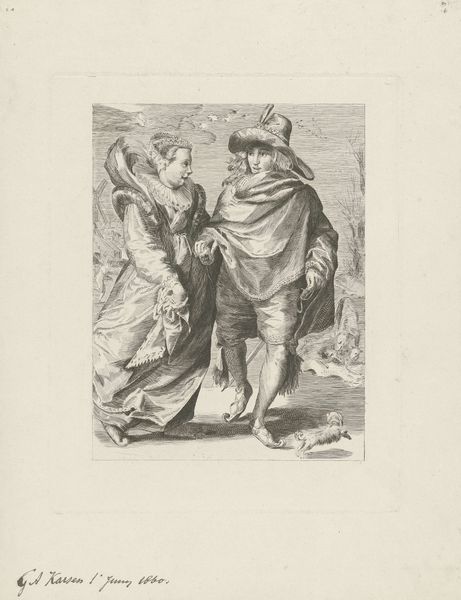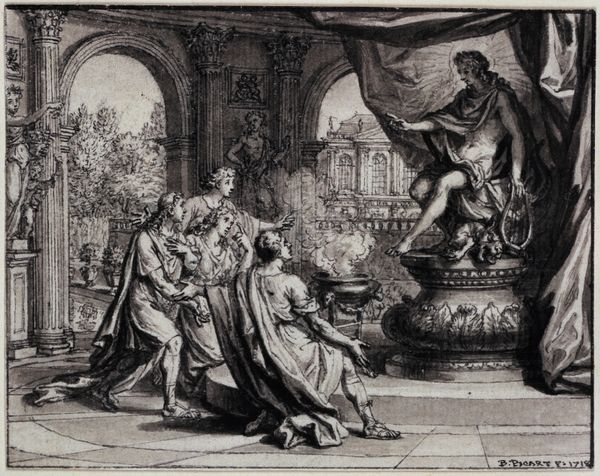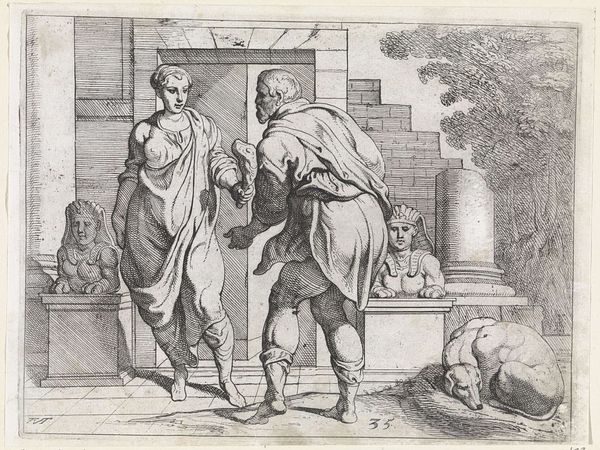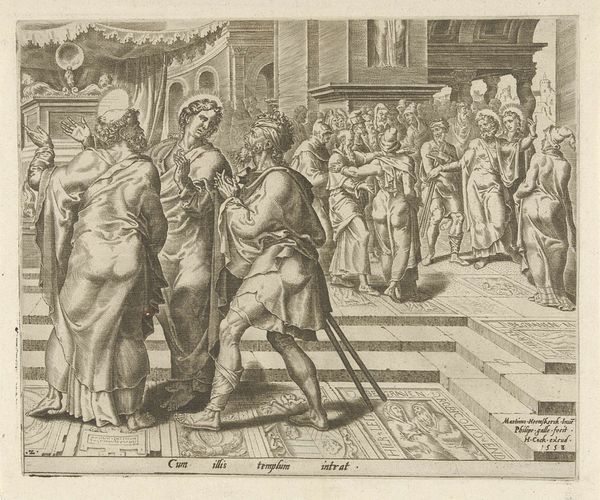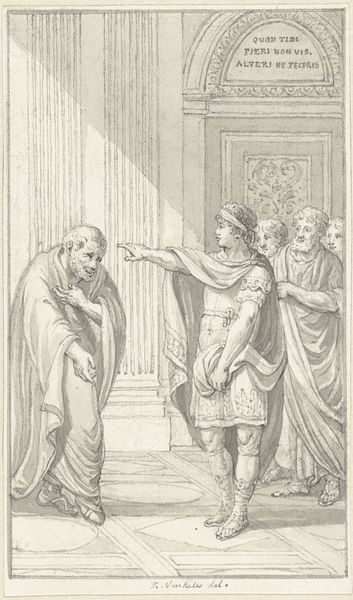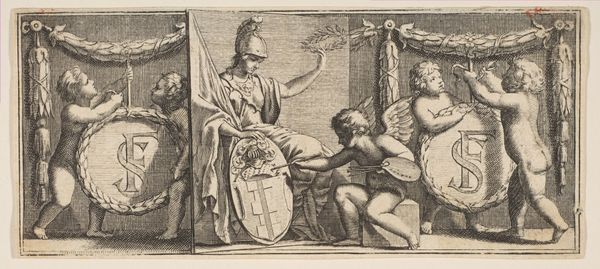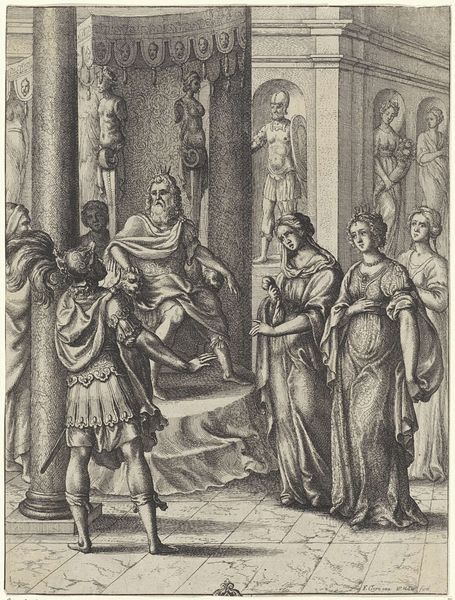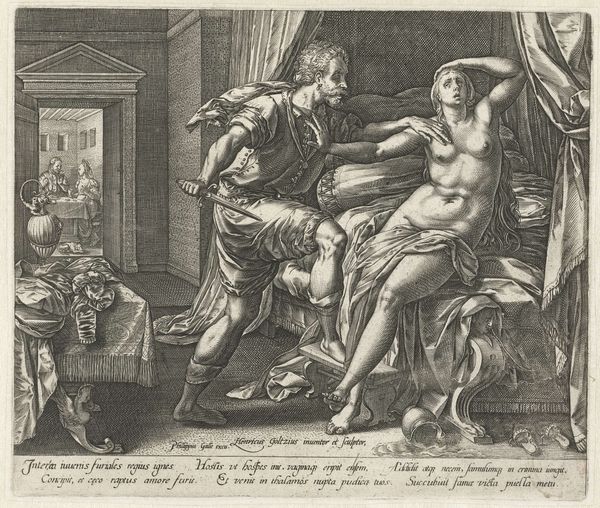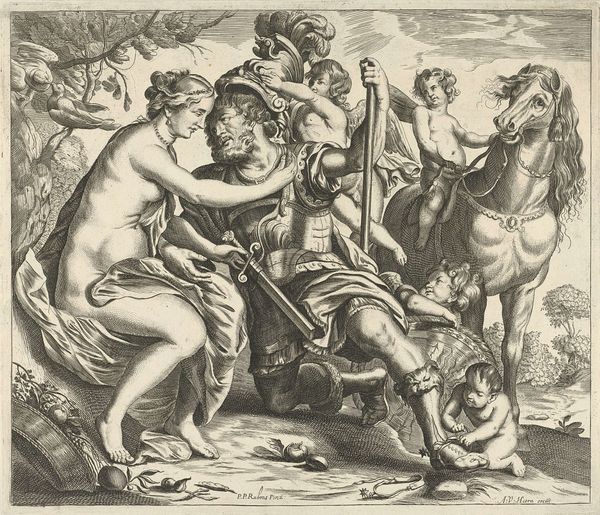
painting, oil-paint
#
portrait
#
allegory
#
baroque
#
painting
#
oil-paint
#
history-painting
#
italian-renaissance
#
nude
Copyright: Public Domain: Artvee
Guercino painted ‘Cleopatra and Octavian’ sometime in the 17th century, capturing a pivotal moment between the conquered queen and her captor. Here, the keys symbolize Octavian's victory and Cleopatra's loss of sovereignty. Her hand gestures, caught between defiance and despair, are a poignant echo of ancient iconography, where such gestures were often associated with grief or supplication. Consider the motif of the keys: in antiquity, keys were not merely functional objects but potent symbols of authority and access. Their presentation here mirrors countless historical depictions of surrender, yet Cleopatra's regal bearing resists complete subjugation. We see it echoed through medieval images of defeated kings presenting their swords as signs of submission, or even in religious art, where keys represent spiritual authority. Cleopatra’s vulnerability resonates deeply, engaging us on a subconscious level. The enduring power of such images lies in their ability to tap into our collective memory of human suffering and resilience. It reminds us that these symbols are far from static; they evolve, resurface, and take on new meanings in the ever-turning wheel of history.
Comments
No comments
Be the first to comment and join the conversation on the ultimate creative platform.
